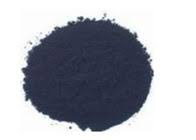Exploring the Rich History and Techniques of Indigo Dyeing in Textile Arts
The Allure of Indigo Dyes A Journey Through History and Culture
Indigo dyes have captivated cultures across the globe for thousands of years, enchanting artisans, designers, and consumers alike with their deep, rich hues. The story of indigo is not just about color; it is a tale of history, tradition, and artistic expression that spans continents and centuries.
Historical Significance
The history of indigo dyeing can be traced back to ancient civilizations. Archaeological evidence suggests that it was used in Egypt as far back as 2500 BC. The blue dye was derived from the plant Indigofera tinctoria, which was revered for producing an exceptional and stable blue that remained vibrant even after extensive washing.
Indigo became established in various cultures, including India, where it was cultivated extensively and transformed into a significant economic commodity. Indian artisans perfected the art of dyeing, creating intricate patterns and designs that showcased their craftsmanship. The dye not only stained textiles but also served as a symbol of wealth and status.
In West Africa, indigo played a critical role in both trade and cultural identity. The dye was used in the production of traditional textiles, which were often adorned with intricate motifs representing the wearer’s lineage or social status. In this region, indigo was more than just a color; it embodied community ties and cultural heritage.
The Indigo Revolution and Global Impact
indigo dyes

The demand for indigo surged in the 18th century, leading to what is often referred to as the Indigo Revolution. European countries began to recognize the economic potential of indigo, particularly in the textile industry. Plantations were established in the British colonies, particularly in India and the Americas, to meet the growing demand. This shift not only highlighted indigo's commercial value but also had profound impacts on the social and economic structures in these regions, often leading to exploitation and conflict.
With the advent of synthetic dyes in the 19th century, the focus shifted significantly. While these chemical alternatives offered convenience and a broader spectrum of colors, they lacked the depth and complexity of natural indigo. As a result, the indigo dyeing tradition began to decline, leading to the loss of many artisanal practices and knowledge.
Revival in Modern Culture
Recently, there has been a resurgence of interest in natural dyes, including indigo, driven by the sustainable fashion movement. Contemporary consumers are becoming increasingly aware of the environmental and ethical implications of their purchasing decisions. As a result, many designers and textile artists are returning to traditional dyeing techniques, seeking to revive the artistry and craftsmanship associated with indigo.
Modern indigo dyeing processes often celebrate the imperfections of natural materials and the artistry that emerges from them. From the intricate shibori techniques in Japan to the resist dyeing methods in West Africa, contemporary artisans are reinterpreting traditional practices, creating unique pieces that tell a story. This revival not only promotes sustainable fashion but also fosters a deeper appreciation for cultural heritage and artisanal skills.
Conclusion
The journey of indigo dye, from its ancient origins to its modern revival, is a testament to the enduring allure of this captivating hue. More than just a color, indigo encapsulates a rich history and the varied cultural narratives of the peoples who embraced it. As we navigate an era that values sustainability and individuality, indigo continues to inspire and connect us, reminding us that the past and present can harmoniously coexist through the arts and crafts of dyeing. Whether in high fashion or home textiles, the indigo dye remains a potent symbol of creativity, resilience, and global interconnectedness.
-
The Timeless Art of Denim Indigo Dye
NewsJul.01,2025
-
The Rise of Sulfur Dyed Denim
NewsJul.01,2025
-
The Rich Revival of the Best Indigo Dye
NewsJul.01,2025
-
The Enduring Strength of Sulphur Black
NewsJul.01,2025
-
The Ancient Art of Chinese Indigo Dye
NewsJul.01,2025
-
Industry Power of Indigo
NewsJul.01,2025
-
Black Sulfur is Leading the Next Wave
NewsJul.01,2025

Sulphur Black
1.Name: sulphur black; Sulfur Black; Sulphur Black 1;
2.Structure formula:
3.Molecule formula: C6H4N2O5
4.CAS No.: 1326-82-5
5.HS code: 32041911
6.Product specification:Appearance:black phosphorus flakes; black liquid

Bromo Indigo; Vat Bromo-Indigo; C.I.Vat Blue 5
1.Name: Bromo indigo; Vat bromo-indigo; C.I.Vat blue 5;
2.Structure formula:
3.Molecule formula: C16H6Br4N2O2
4.CAS No.: 2475-31-2
5.HS code: 3204151000 6.Major usage and instruction: Be mainly used to dye cotton fabrics.

Indigo Blue Vat Blue
1.Name: indigo blue,vat blue 1,
2.Structure formula:
3.Molecule formula: C16H10N2O2
4.. CAS No.: 482-89-3
5.Molecule weight: 262.62
6.HS code: 3204151000
7.Major usage and instruction: Be mainly used to dye cotton fabrics.

